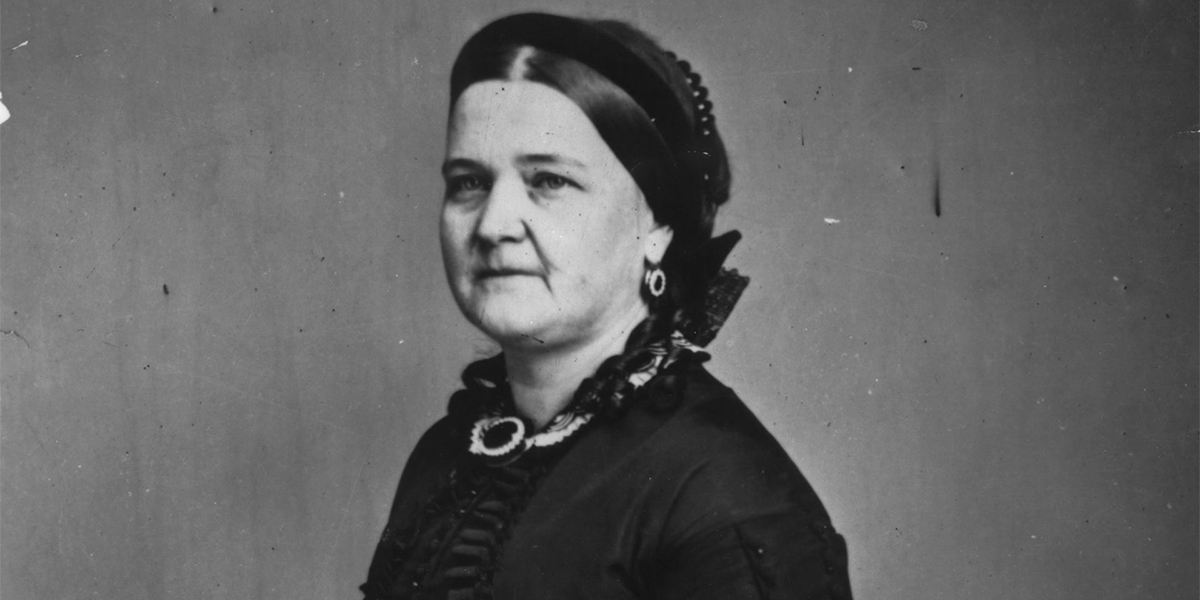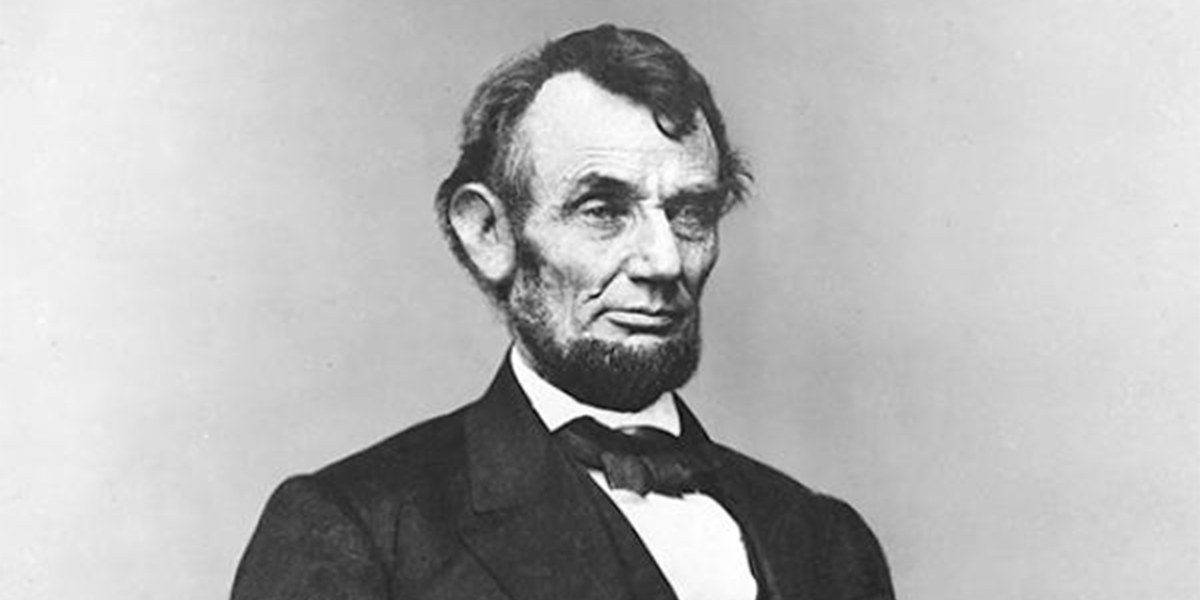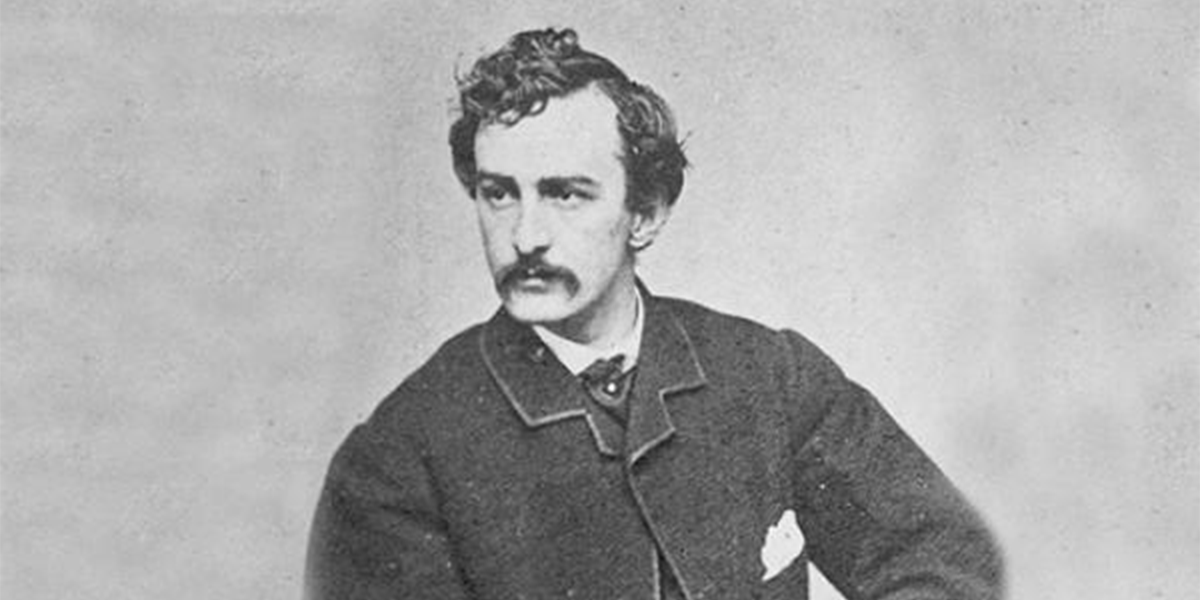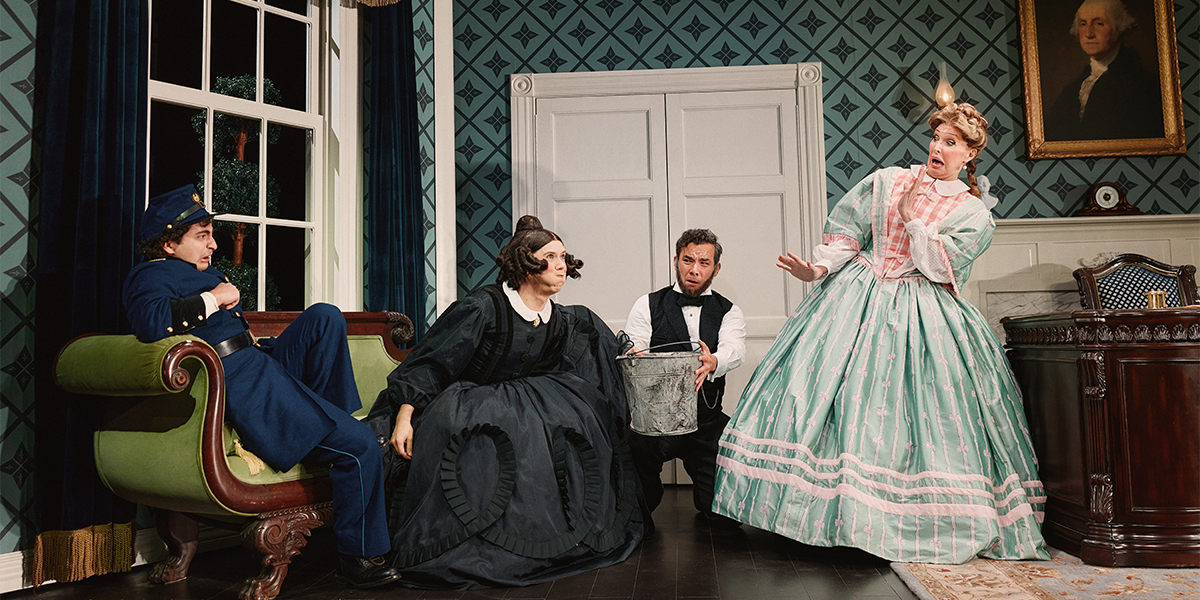The real history behind 'Oh, Mary!' on Broadway
Learn what's fact, what's fiction, and what's in between in comedian Cole Escola's critically acclaimed comedy play about the inner life of Mary Todd Lincoln.
The new Broadway play Oh, Mary! may be about Mary Todd Lincoln, but it's not concerned with historical accuracy. Or is it? Writer and star Cole Escola has said they based their play on a "third grade understanding" of her life and an exaggerated version of Escola's own self — which has proven a winning combo.
Oh, Mary! was supposed to be an eight-week Off-Broadway production. It ended up having a sold-out 14-week run and, with its entire cast intact, transferred to Broadway's Lyceum Theatre. Critics and audiences alike have praised Escola's over-the-top portrayal of Mary as a woman consumed by lust, alcoholism, and a burning desire to be a cabaret star in the weeks before her husband's assassination.
"In our minds, we tend to elevate historical figures to a point where they are no longer human, and I've started thinking that our show might actually be closer to the truth than we think," said Conrad Ricamora, who plays Abraham Lincoln. "We can only guess what these people were like. They might have been crazy and weird."
So what's fact, what's fiction, and what's somewhere in between in Oh, Mary!? Learn more and hear cast members weigh in below.
Get Oh, Mary! tickets now.
Theatre and performing arts in the 1800s
The theatre is inextricably linked with the history of the Lincolns, as Abraham Lincoln was killed at the theatre shortly after the end of the Civil War in 1865. Oh, Mary! adds another connection: Escola's version of Mary Todd Lincoln was a performer before she became First Lady.
"I’m a rather well-known niche cabaret legend," she tells her acting teacher (James Scully) in one scene. "Or I used to be, until my career was cut short by a love affair gone horribly right."
Cabaret as we know it — live performance for an audience eating or drinking at tables — actually came to the U.S. from France in 1911, almost 50 years after the events of Oh, Mary! Similar theatrical forms like vaudeville and music hall also didn't emerge stateside until the 1880s.
Historically, then, the closest to what Mary does is burlesque, which took off in America in the late 1860s and was performed in cabaret halls. Burlesque didn't imply striptease then as it does now; it meant parodying serious songs and stories. In Oh, Mary!, the First Lady performs a "madcap medley" of classic American tunes, complete with costume changes and confetti.

Historical figures in Oh, Mary!
Of the five characters in Oh, Mary!, three are historical figures, and two are likely inspired by real people. Learn more about the play's characters and their real-life counterparts below.
Mary Todd Lincoln
If Escola gets one thing right about Mary Todd Lincoln, it's that she was anything but a refined public figure.
Her frequent mood swings and outbursts, likely due in part to mental illness and grief at her children's deaths, are well-documented. One of Abraham Lincoln's staffers nicknamed her "the hellcat." Elizabeth Keckley, Mary's dressmaker, wrote in her 1868 autobiography that Mary was a loving wife and loyal first lady — and also "high tempered, full of fear and anxiety, self-centered and often self-pitying."
According to Scully, director Sam Pinkleton even showed the cast a telegram from a member of a social club Mary attended. It read: "To the attention of Mr. Abraham Lincoln, please send for your wife. She is here debasing herself and mortifying her friends."
Escola's Mary blends fiction and reality. The character doesn't care for her kids or "respectable" activities like horseback riding and painting. While her husband is tending to politics, she languishes in the White House, drinking. (The real Mary was also known to use alcohol and opium, which were common ingredients in medicine then.)
Mary only wants to return to her bygone career as a cabaret performer, but her husband deems it "inappropriate." That doesn't stop her from secretly auditioning for My American Cousin, the show at which Lincoln was later killed.
In fact, Escola said they chose to write about Mary because "she's the only historical figure I can think of that has a husband who was assassinated while they were seeing a play."

Abraham Lincoln
He was the 16th president of the United States. He signed the Emancipation Proclamation that freed the country's slaves following the Civil War. He was a notoriously bad dancer.
That last fact is understudy Hannah Solow's favorite about the former president. Abraham met Mary Todd at a dance in Springfield, Illinois, and reportedly told her, "I should like to dance with you in the worst way." He did so literally, but Mary dated him anyway and, after a brief breakup, married him in 1842.
In Oh, Mary!, that's the cover story for the real (fictional) way they met: at a cabaret, which Abraham doesn't want anyone to know. The character treats his wife with disgust and disdain — much different than our modern idea of the former president!
There isn't much documentation about the true nature of his and Mary's marriage, but some modern scholars allege that unkindness went both ways.

John Wilkes Booth
"What if Liam Hemsworth killed the prime minister of Australia, or Dave Franco killed Joe Biden?" said Oh, Mary! cast member Tony Macht, trying to think of a modern analogy for what it was like when John Wilkes Booth, a theatre actor, assassinated Abraham Lincoln.
Booth was the son of two actors and younger brother to two more, making him all but destined to pursue the profession. For 15 years, he performed across the Northeast U.S., including in Shakespeare's Julius Caesar in the original Winter Garden Theatre in New York City.
In 1863, he was one of the first actors to lead a play at the then-new Ford's Theatre in D.C: The Marble Heart, which Lincoln reportedly attended. Booth, a Confederate sympathizer, killed the president at that same venue two years later.
Booth is, of course, present at Lincoln's assassination, but we won't spoil anything else about his involvement in Oh, Mary!

Additional Oh, Mary! characters
Two other characters appear in Oh, Mary!: Mary's chaperone, Louise (Bianca Leigh), and Abraham's assistant, Simon (Tony Macht). Both are fictional, but they have similarities to real people in the Lincolns' circle.
Louise recalls Elizabeth Keckley, who was the real Mary's dressmaker and close friend. Having lived with Mary and Abraham for years, she had a uniquely unfiltered look into their lives, as Louise does.
Keckley shared previously unknown information about Mary and Abraham in her autobiography, Behind the Scenes. Though controversial in its time, the book has since become a respected historical document about the Lincolns and Keckley's own life as a Black woman in pre-Civil War America.
Simon brings to mind Joshua Fry Speed, Abraham's close friend and roommate until he married Mary. They shared a bed — a common, platonic practice at the time — which has sparked theories that Lincoln was gay.
Those theories remain debatable, but that didn't stop Escola from working them into Oh, Mary! Indeed, the word "Mary" is old-fashioned slang for a gay man. Once derogatory, the term has been reclaimed by some queer people — and this show.
Get Oh, Mary! tickets now.
Top and bottom image credit: Oh, Mary! on Broadway. (Photos by Emilio Madrid)
Originally published on
